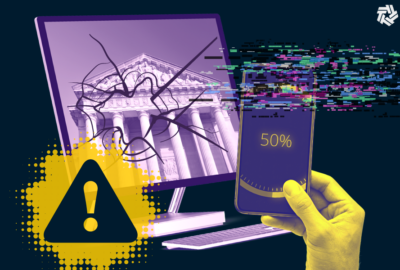Agencies need customer experience ‘quarterback’ and scorecard to track progress, experts say
The Biden administration is calling on agencies to improve customer experience across government, but former federal officials say a chief customer officer and...
The Biden administration is calling on agencies to improve customer experience across government, but former government officials say a federal chief customer officer and scorecard are needed to track and encourage progress.
The administration made customer experience improvements a priority in an executive order last year and in the President’s Management Agenda. Congress, meanwhile, passed the 21st Century Integrated Digital Experience Act (IDEA) more than three years ago to set a higher bar for online services from agencies.
But to demonstrate progress on these efforts, former General Services Administration executive Martha Dorris, the founder of Dorris Consulting International, said agencies need a customer experience scorecard to make consistent improvements.
Dorris said Congress could either tack a customer experience category on the existing Federal Information Technology Acquisition Reform Act (FITARA) scorecard or create a standalone scorecard.
“The government has unique challenges when implementing customer experience, due to the large and diverse population we serve, quantifying the benefits of customer experience, including increased efficiency, employee engagement, voluntary compliance with government mandates, simplifying the lives of Americans and building trust in government,” Dorris said.
Committee Ranking Member Rob Portman (R-Ohio) expressed an interest in implementing a customer experience scorecard, adding that tracking progress has been hard to quantify up until this point.
“I don’t know how to measure it very well. Our team has had some issues on that. There’s this FITARA measurement that is not related as much to the customer service, generally, but to IT improvements,” Portman said.
Portman said many elements of the 21st Century IDEA, a bill he introduced in the Senate, remain unimplemented, and that he’s been overall “disappointed in the implementation.”
The Office of Management and Budget, he added, has not yet issued guidance for agencies to implement the legislation.
“Until that guidance is issued, it’s very difficult to get the agencies to implement this integrated digital experience legislation,” Portman said.
Matt Lira, former special assistant to the president for Innovation Policy and Initiatives in the Office of American Innovation under the Trump administration, now a partner at Hangar Capital, said he supports the idea of a scorecard, adding that the FITARA scorecard has led to consistent improvements to IT modernization in government.
“It’s tangible, it’s binary, it’s quantitative. And I will say firsthand, being on the other side of Pennsylvania Avenue, it was an incredibly useful tool, the FITARA scorecard, in driving agency deliverables,” Lira said.
Mike Hettinger, the president of Hettinger Strategy and a former staff director for the House Oversight and Government Reform Subcommittee, told Federal News Network that a scorecard could standardize customer experience improvements the same way that FITARA put a spotlight on IT modernization.
“You hope that we could get out ahead of this, and not wait 20 years until we see that CX implementation has been inconsistent across the government,” Hettinger said.
Dorris also called on Congress to pass legislation that would create a federal chief customer officer “responsible for establishing the vision and strategy for improving the end-to-end customer experience.”
Dorris said agencies start to improve customer experience by making it a priority at all levels of government.
“Once you have it as a priority, then you can figure out how do you put the customer at the center. How do you have outside-in thinking, rather than inside-out thinking?” she said.
Lira said agencies often run into logistical challenges when it comes to improving customer experience, including obtaining the authority to operate new technologies and overcoming procurement challenges. He said agencies that best overcome these challenges have a “leadership spine,” or a core team of executives leading customer experience changes.
“It wasn’t enough simply to have a well-motivated CTO. You needed to have an equally well-motivated procurement officer and equally well-motivated counsel so that you can manage the process of getting an agency to move forward. Rarely, if it all, it was a technology problem,” Lira said.
Dorris also told the committee that each of the 35 agencies and programs designated as High-Impact Service Providers should also have an executive in charge of customer-focused initiatives who reports to the agency’s leadership.
Federal Chief Information Officer and Technology Modernization Fund Chairwoman Clare Martorana has led many of the governmentwide CX transformation efforts. Martorana recently announced the TMF will invest $100 million in customer experience improvement projects.
“You really don’t have anyone whose sole responsibility is taking care of those issues. We really need like a CX quarterback,” Hettinger said.
The private sector has embraced the concept of chief customer experience officers, as have several federal agencies. However, Lira told the committee that the level of customer experience between the public and private sectors is growing.
“We live in a time of exponential change. And far too often, agencies are making linear progress over time. This means even as meaningful progress has made, the gap between a customer’s expectation and the experiences is getting worse,” Lira said.
Several agencies have elevated customer experience within their organizational structure. The IRS stood up a Taxpayer Experience Office as part of the Taxpayer First Act, and the VA created its Veterans Experience Office in response to veterans waiting to receive health care.
Hettinger said those agency-level examples demonstrate the need for someone to coordinate customer experience governmentwide.
“You look at that and you say, ‘Well let’s just raise that up a level,'” Hettinger said.
Committee Chairman Gary Peters (D-Mich.) said agencies face an uphill battle “restoring decades of lost faith” in government providing a high level of service to the public.
“Rebuilding trust in our government is essential, and we can help restore the public’s confidence in the federal government by continuing to strengthen its ability to deliver critical services,” Peters said
William Eggers, the executive director for Deloitte’s Center for Government Insights, said that while the overall level of trust in government has been declining, public satisfaction with individuals varies greatly, and agencies with greater interaction with the public generally score higher.
“We can’t address the issue of trust and confidence issues in the federal government with a one-size-fits-all approach,” Eggers said.
Peters and Portman both raised concerns about the General Services Administration’s rollout of SAM.gov, the governmentwide registration system for federal contracts.
“Businesses have had real trouble getting paid for work they did for the government, or had agencies stop working with them because the website’s system for registration renewal was not working,” Portman said.
Peters said he recently spoke with GSA Administrator Robin Carnahan, and that the agency’s Technology Transformation Service has addressed many of the initial setbacks of the site’s launch.
Lira said that agencies are generally relying more on off-the-shelf commercial technologies and services to improve customer experience, rather than developing those solutions in-house.
“We are dealing with major programs that touch, in some cases, hundreds of millions of Americans. And it’s very unlikely that a small team and an agency could ever scale to the size of the problem,” Lira said.
Copyright © 2025 Federal News Network. All rights reserved. This website is not intended for users located within the European Economic Area.
Jory Heckman is a reporter at Federal News Network covering U.S. Postal Service, IRS, big data and technology issues.
Follow @jheckmanWFED
Related Stories

OMB names 5 priority areas to improve interagency customer experience, as IRS also tackles citizen services




